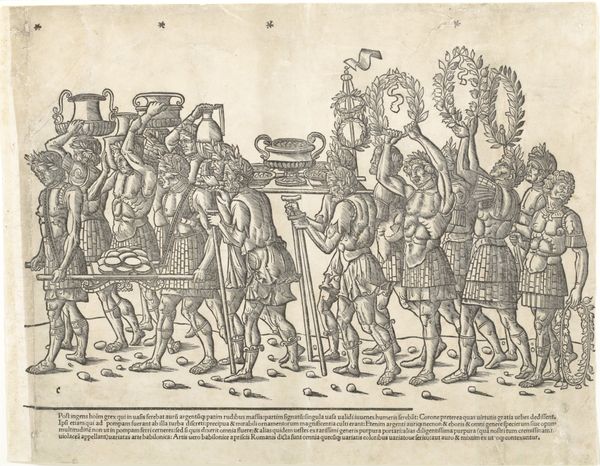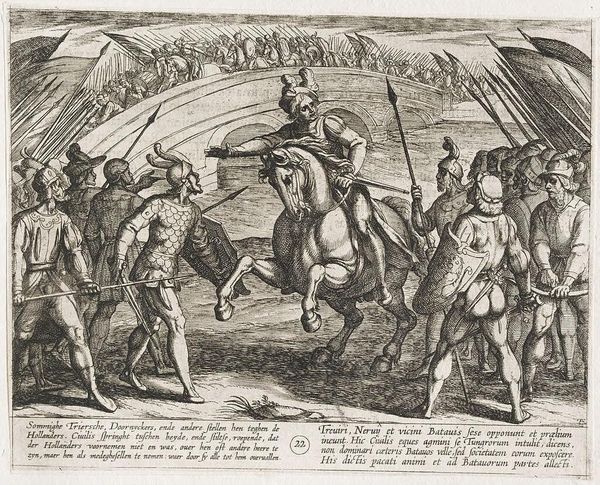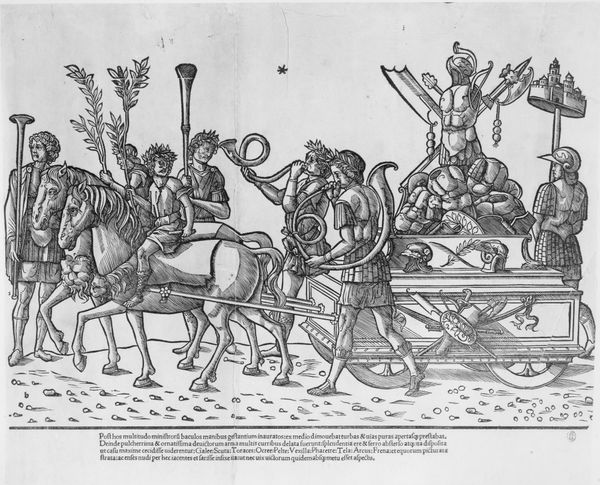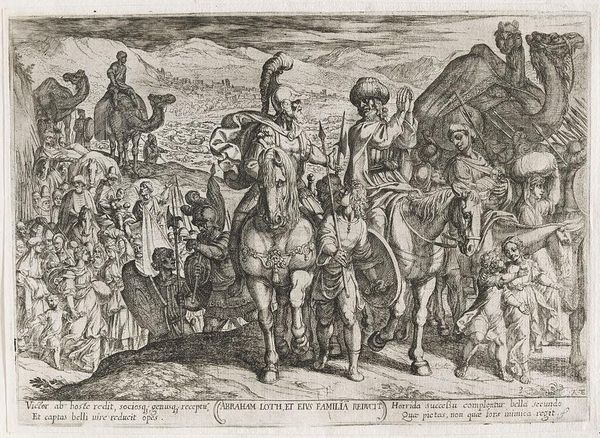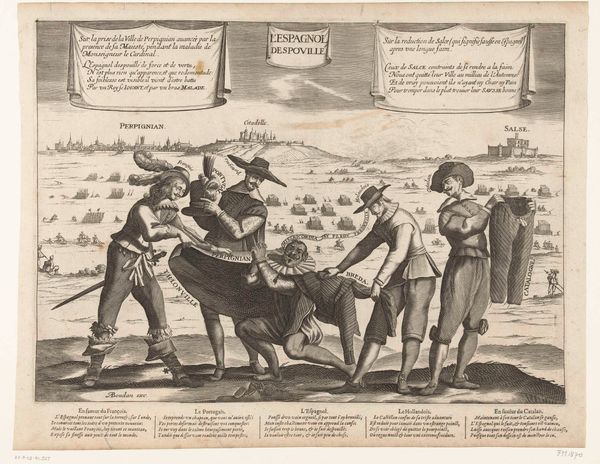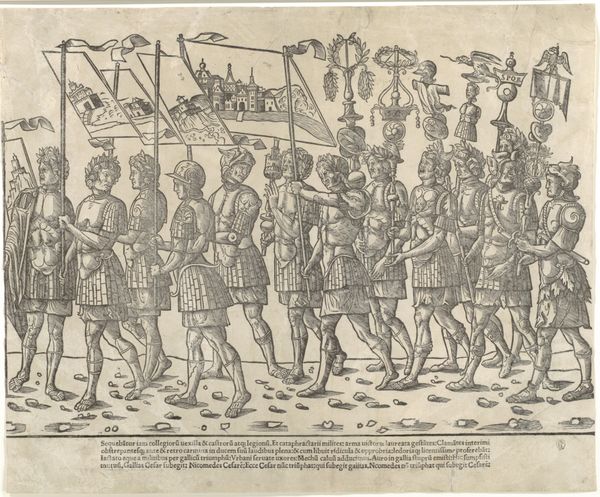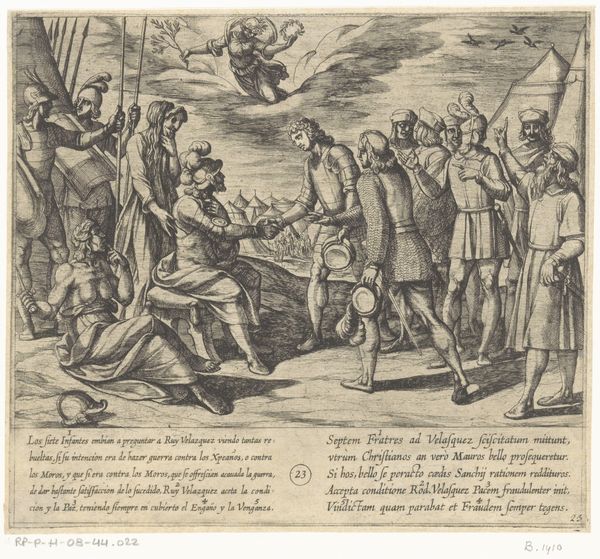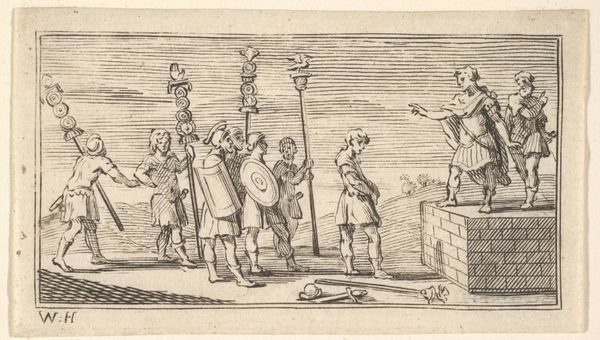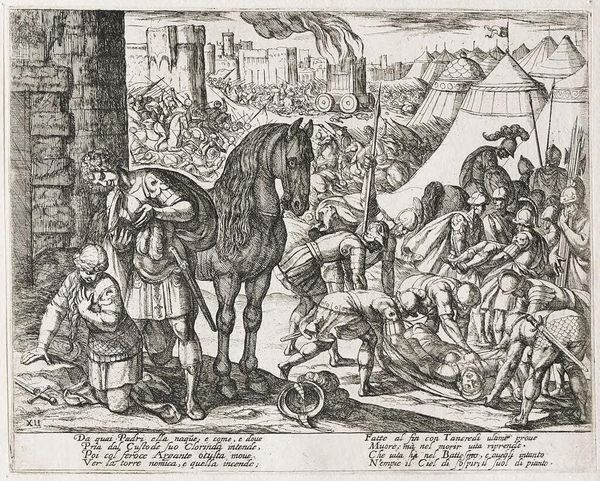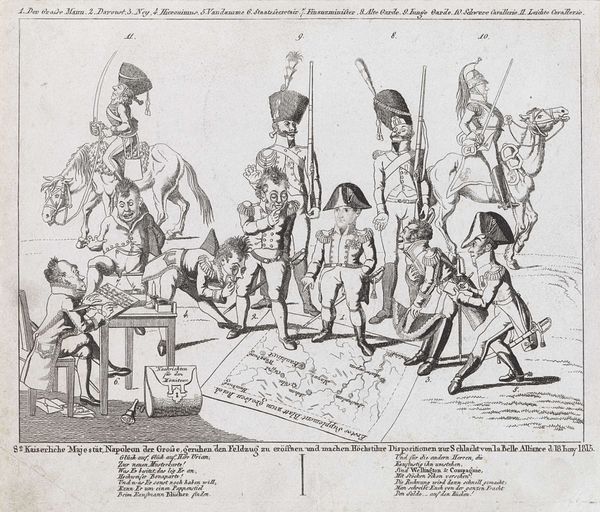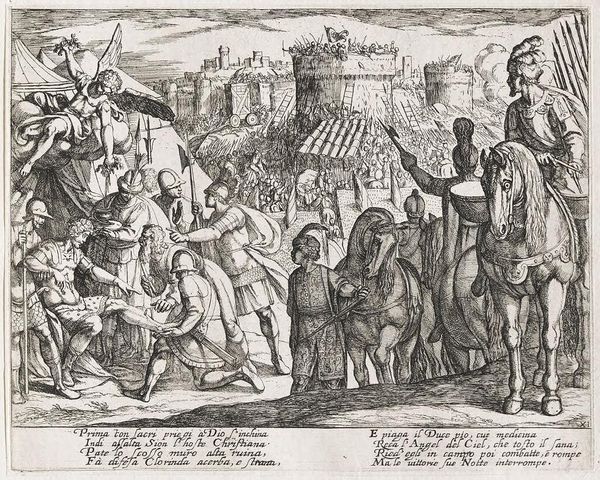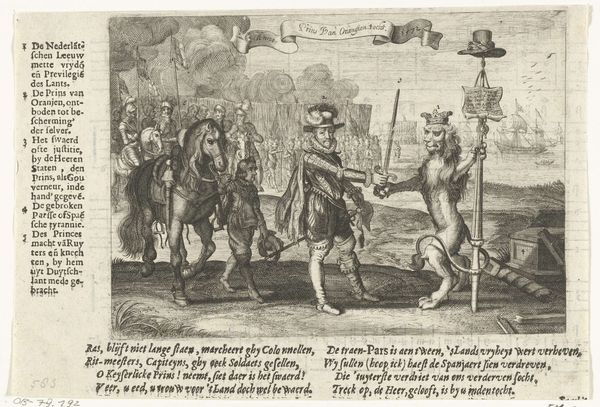
drawing, print, engraving
#
drawing
# print
#
11_renaissance
#
men
#
pen work
#
history-painting
#
northern-renaissance
#
engraving
Dimensions: Height: 13 in. (33 cm) Width: 15 3/4 in. (40 cm)
Copyright: Public Domain
Editor: This engraving, "Trumpeters, from 'The Triumph of Caesar,'" dating back to 1504, seems incredibly detailed given its age. I’m struck by the dynamism of the figures, even though the composition feels quite linear. How do you interpret this work from a formalist perspective? Curator: The linear quality you observe is crucial. Notice how the artist utilizes line—primarily through engraving—to define form and create tonal variations. The density and direction of these lines give shape to the figures, their garments, and the elaborate trumpets. Consider the composition; the arrangement of figures creates a distinct rhythm across the picture plane, doesn't it? Editor: Yes, there’s a definite pattern in how they're spaced. But what about the inscription? Does that hold formal relevance? Curator: Indeed. While textual elements are typically extratextual, its inclusion here affects the overall design. Its placement and the contrasting texture it provides contribute to the visual balance and distribution of values within the entire work. Ignoring its meaning, how does its sheer presence change our reading of the forms? Editor: It adds another layer of complexity. By understanding its effect, I think that even if I can’t read it, I see its value in the greater composition. Thank you for showing me how the art elements shape our comprehension and emotional connection to it. Curator: Absolutely. Remember that even when approaching art through formalism, considering its basic elements reveals deeper aesthetic understanding.
Comments
No comments
Be the first to comment and join the conversation on the ultimate creative platform.
